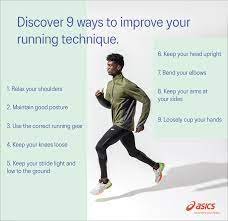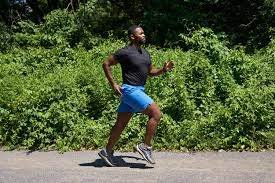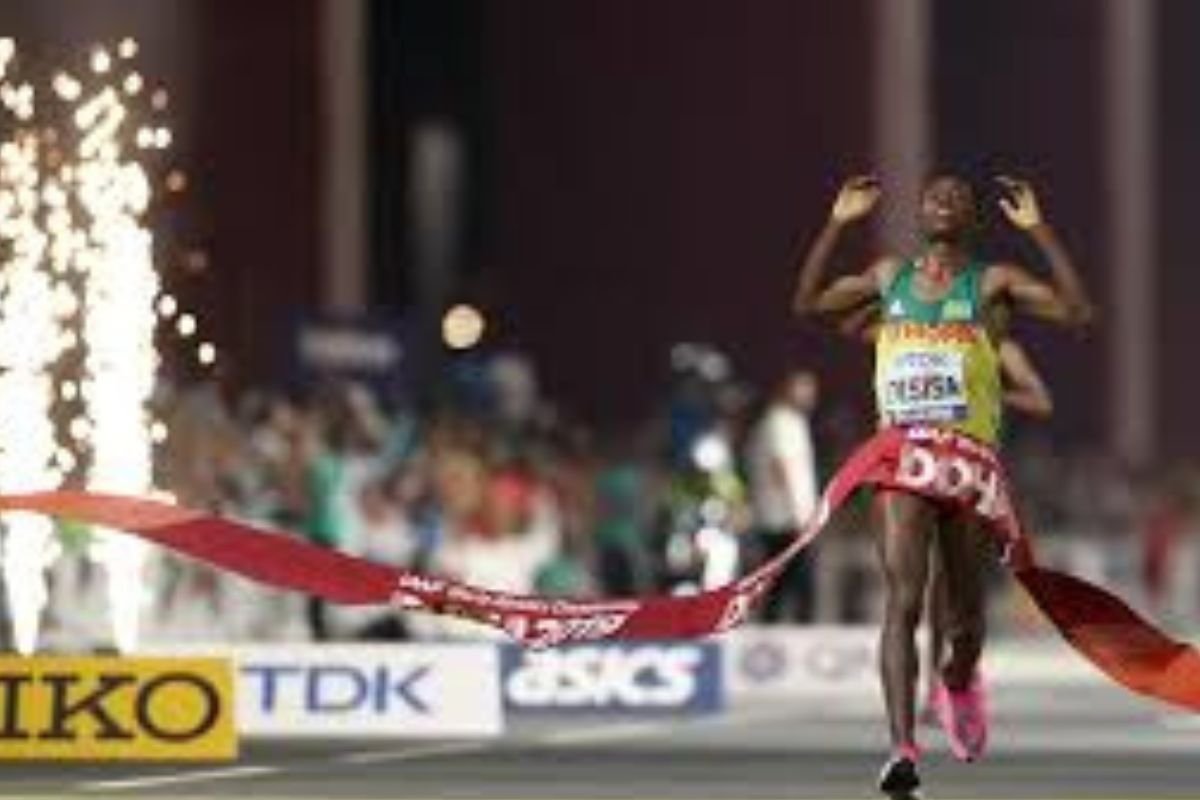Introduction
Running, a timeless form of exercise, not only helps you stay physically fit but also provides numerous mental and emotional benefits. In this article, we’ll explore essential tips and strategies to enhance your running experience, whether you’re a beginner looking to start or a seasoned runner aiming to optimize performance.
Getting Started with Running
Choosing the Right Footwear
Selecting appropriate running shoes is crucial for comfort and injury prevention. Visit a specialized store for a gait analysis to determine the right type of shoes for your foot mechanics.
Setting Realistic Goals
Establishing achievable running goals is key to staying motivated. Whether it’s completing a 5K or improving your pace, realistic objectives create a sense of accomplishment.
Gradual Progression
Avoid overexertion by gradually increasing your running distance and intensity. This approach minimizes the risk of injuries and allows your body to adapt to the demands of running.

Proper Running Form
Posture and Alignment
Maintain an upright posture with a slight forward lean. Keep your head up, shoulders relaxed, and arms at a comfortable 90-degree angle. Proper alignment optimizes efficiency and reduces strain on muscles.
Stride Length and Cadence
Focus on a natural stride length and aim for a cadence (steps per minute) of around 170-180. A shorter, quicker stride can enhance running efficiency and reduce impact on joints.
Breathing Techniques
Practice rhythmic breathing to ensure a steady flow of oxygen. Inhale through your nose and exhale through your mouth. Experiment with different breathing patterns to find what works best for you.
Warm-Up and Cool-Down Routine
Importance of Dynamic Warm-Up
Prioritize dynamic warm-up exercises to prepare your muscles for the run. Include leg swings, high knees, and lunges to increase blood flow and flexibility.
Incorporating Static Stretches
Perform static stretches post-run to improve flexibility and prevent muscle tightness. Focus on major muscle groups, holding each stretch for 15-30 seconds.
Cooling Down After a Run
Allow your heart rate to gradually decrease by engaging in a light jog or brisk walk after running. Follow this with additional static stretches to aid in muscle recovery.
Building Endurance
Interval Training
Incorporate interval training to improve cardiovascular fitness. Alternate between periods of high-intensity running and active recovery, gradually increasing the duration of intense intervals.
Long-Distance Runs
Build endurance with longer, slower-paced runs. These runs enhance your cardiovascular capacity and mental resilience, essential for tackling extended distances.
Fartlek Training
Combine speed play (fartlek) into your runs by alternating between faster and slower segments. Fartlek training simulates the varied pace of real-world running conditions.
Strength Training for Runners
Targeted Muscle Groups
Focus on strengthening key muscle groups, including the core, glutes, and lower body. A strong foundation reduces the risk of injuries and enhances running performance.
Bodyweight Exercises
Incorporate bodyweight exercises like squats, lunges, and planks into your routine. These exercises improve overall strength and stability, contributing to better running form.
Cross-Training Activities
Engage in cross-training activities such as cycling or swimming to prevent monotony and enhance overall fitness. Cross-training offers a break from running while still benefiting cardiovascular health.
Hydration and Nutrition
Importance of Hydration
Stay adequately hydrated before, during, and after your runs. Carry a water bottle or plan routes with accessible water sources to prevent dehydration.
Pre-Run Nutrition
Consume a balanced meal 1-2 hours before running, focusing on a combination of carbohydrates and protein. Experiment to find foods that provide sustained energy without causing digestive discomfort.
Post-Run Recovery Meals
Optimize recovery with post-run meals rich in carbohydrates and protein. This aids muscle repair and replenishes glycogen stores, promoting faster recovery.
Overcoming Running Challenges
Dealing with Shin Splints
Address shin splints by ensuring proper footwear, gradually increasing intensity, and incorporating strength training to improve lower leg stability.
Preventing Runner’s Knee
Strengthen quadriceps and hamstrings to prevent runner’s knee. Ensure proper running form and consider consulting a professional for gait analysis and biomechanical assessment.
Listening to Your Body
Pay attention to signs of fatigue, pain, or discomfort. It’s crucial to distinguish between normal muscle soreness and potential injuries. Rest when needed and seek professional advice if issues persist.

Staying Motivated
Creating a Running Playlist
Curate a motivating playlist with songs that energize and uplift you. Music can be a powerful motivator, enhancing the enjoyment of your run.
Joining Running Communities
Connect with local or online running communities to share experiences, tips, and encouragement. Social support fosters motivation and a sense of belonging.
Setting Milestone Rewards
Celebrate milestones, whether it’s achieving a personal best or completing a certain distance. Rewarding yourself creates positive reinforcement and sustains motivation.
Running in Different Weather Conditions
Hot Weather Tips
Stay hydrated, wear light and breathable clothing, and choose early morning or evening hours to avoid extreme heat.
Cold Weather Precautions
Layer clothing to stay warm, protect extremities with gloves and hats, and be cautious of icy surfaces.
Wet and Rainy Days
Invest in water-resistant gear and choose appropriate footwear for wet conditions. Running in the rain can be refreshing with the right preparation.
Choosing the Right Running Surface
Benefits of Trail Running
Trail running provides a change of scenery, varied terrain, and a softer surface that reduces impact on joints.
Treadmill vs. Outdoor Running
Consider the pros and cons of treadmill running versus outdoor running. Both options offer unique advantages, and variety can enhance overall running experience.
Mixing Up Running Surfaces
Rotate between different running surfaces, including pavement, grass, and gravel, to prevent overuse injuries and engage different muscle groups.
Running Gear Essentials
Moisture-Wicking Clothing
Invest in moisture-wicking clothing to keep sweat away from your skin, preventing chafing and discomfort.
GPS Watches and Fitness Trackers
Use GPS watches or fitness trackers to monitor distance, pace, and other metrics. These devices provide valuable insights into your running performance.
Safety Gear for Night Running
Wear reflective clothing and use headlamps or other visibility aids when running in low-light conditions. Prioritize safety to reduce the risk of accidents.
Posture and Running Efficiency
Core Strength for Better Posture
Strengthen your core muscles to maintain proper posture during runs. A stable core enhances overall running efficiency.
Avoiding Common Posture Mistakes
Be mindful of common posture mistakes, such as hunching shoulders or leaning too far forward. Correcting these habits minimizes strain on muscles and joints.
Seeking Professional Guidance
Consider consulting a running coach or physical therapist for a biomechanical assessment. Professional guidance can address specific issues and optimize your running form.
Common Myths about Running
Running and Joint Health
Contrary to common myths, running can be beneficial for joint health when done with proper form and in moderation. Strengthening supporting muscles contributes to joint stability.
Running Every Day for Weight Loss
Quality trumps quantity when it comes to running for weight loss. Consistent, well-planned runs are more effective than daily exhaustive sessions.
“No Pain, No Gain” Mentality
While some discomfort is normal, the “no pain, no gain” mentality can lead to overtraining and injuries. Listen to your body and prioritize balanced training.
Expert Advice and Personal Stories
Tips from Running Coaches
Incorporate tips from experienced running coaches, emphasizing the importance of individualized training plans and gradual progression.
Success Stories of Transformation
Read about real-life transformations through running. Personal stories inspire and showcase the transformative power of consistent effort.
Balancing Professional Guidance with Personal Experience
Combine professional advice with personal experience to tailor your running journey. Every runner is unique, and finding the right balance enhances enjoyment and results.
Conclusion
In conclusion, running is not just a physical activity; it’s a holistic experience that encompasses physical fitness, mental well-being, and personal growth. By following these comprehensive running tips, you can optimize your running journey, whether you’re a beginner or a seasoned enthusiast. Remember, running is a personal endeavor, and the joy lies in the journey. Lace up your shoes, hit the pavement, and embrace the exhilarating and fulfilling world of running.
FAQs
- How often should I change my running shoes? It’s recommended to change running shoes every 300-500 miles or when you notice signs of wear and tear, such as flattened cushioning or worn-out treads.
- Can I run with asthma? Many individuals with asthma can run successfully with proper management. Consult your healthcare provider for personalized advice and medication adjustments.
- Is it necessary to stretch before every run? While dynamic warm-up is crucial, static stretching before every run is not mandatory. Listen to your body and incorporate stretching as needed, especially for tight muscles.
- What’s the ideal duration for a beginner’s running session? Beginners can start with 20-30 minute sessions, gradually increasing duration as fitness improves. Focus on building endurance and listening to your body.
- Can I run during pregnancy? In many cases, running is safe during pregnancy, but it’s essential to consult with a healthcare provider for personalized guidance based on individual health and pregnancy conditions.



